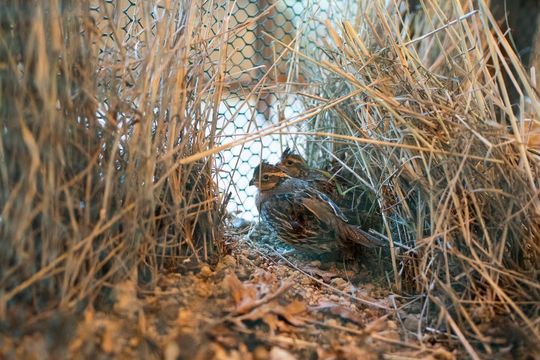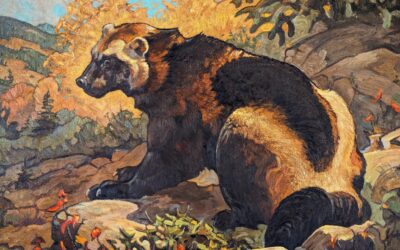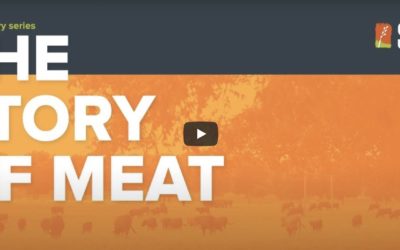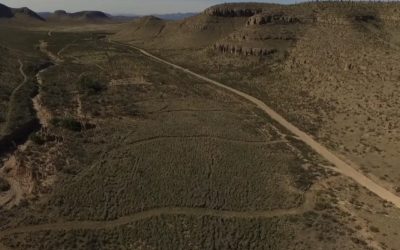Bobwhite Quail Getting New Welcome in West Virginia
Well-intentioned quail releases like the one described in the article below have never worked, and they have been tried for decades. In addition, private landowners release millions of pen-raised quail every year, without reversing the downward trend of wild quail populations.
Quail species have not vanished across much of the continent due to overhunting, climate change, weather, predators or so-called “fragmentation.” They have disappeared because of what we have done to quail habitat and quail health across their range. Some combination of the ever-growing use of agricultural chemicals, and reduced ‘animal impact’ due to widespread removal of livestock, and falling wildlife populations, have created a continent-wide downward quail spiral. Similar declines are also found in insect and songbird populations.
The combination of chemicals and no domestic or wild grazing has hurt the communities of animals, plants, and micro-organisms with which quail are symbiotic. While these practices may not kill quail directly they make them susceptible to quail epidemics and parasites that do.
About 60 years ago, Dr. William Albrecht, who has since been dubbed “the father of soil fertility,” wrote, “It is not the overpowering invader we must fear but the weakened condition of the victim.” While he was referring to humans and our food, his observation is equally true of the wild animals with whom we share this world.
The university ag departments were long-ago “captured” by the agro-giants that manufacture and promote this stuff. The ag departments host the wildlife departments. Several generations of wildlife and agricultural graduates – and their teachers – have been taught that fertilizers, antibiotics, herbicides, pesticides, and poisons are harmless to humans, animals including quail, and the environment. Until we study quail and habitat decline outside of that intellectual box, we will continue to examine and treat symptoms while ignoring causes.
As Albert Einstein is often quoted as saying, “Insanity is doing the same thing over and over again and expecting different results.”
NOTE: this article was originally published to WSJ.com on September 26, 2022. It was written by Kris Maher.
Gov. Jim Justice, lamenting a decades-old hunting loss, is bringing thousands of birds back to the state
West Virginia Gov. Jim Justice said he fondly remembers hearing the distinctive call of the northern bobwhite quail when he was a boy. Like many others, he hunted the birds well into the 1970s before they largely disappeared from the state.

West Virginia is reintroducing 21,000 quail in wildlife management areas and a state forest.Photo: Office of Governor Jim Justice
Now, the governor is trying to bring back the northern bobwhite, also known simply as quail, to the Mountain State by reintroducing 21,000 of them this year in the state’s biggest repopulation campaign to date.
“I’ve missed these little rascals and lots of people have,” Mr. Justice said at a press briefing last week announcing the restoration project. A hunting diary he keeps has an entry from Christmas Eve in 1976 showing that he shot 103 quail that year, he said. “It’s a bird that has been here forever and an incredible wildlife that we need to protect and bring back.”
At the direction of Mr. Justice, the state’s Division of Natural Resources is placing 10-week-old pen-raised birds at seven sites to reintroduce them in wildlife management areas and a state forest.
Initially the birds will be placed in boxes they can exit on their own to find grain in a fenced-in enclosure to protect them from predators. Transmitters will be placed on some of the birds to monitor their survival and habitat use.
Hunters who haven’t seen the northern bobwhite for years or heard its call, sometimes conveyed as “bob-white!” said they are hopeful.
“We all remember when we had quail,” said Larry Case, a retired DNR officer who now writes about guns and hunting. Mr. Case said one challenge to the project is that the populations of predators for quail, from hawks to raccoons and opossums, have grown in West Virginia.
“I definitely hope it works. I’m an old bird-dog guy,” said Mr. Case, who was reached Friday on a hilltop near Richwood, W.Va. “I’m running my dog and looking for a place to hunt, which is what I’m doing about half the time.”
The northern bobwhite, which has a speckled brown body and short gray tail, has been in steep decline in the U.S. and is now losing half its population every seven years, said John Morgan, director of the National Bobwhite & Grassland Initiative.
He said the bird is a prime example of a species that is among the three billion birds lost in the U.S. and Canada since 1970, according to a 2019 study by researchers at the Cornell Lab of Ornithology. The northern bobwhite is still found in good numbers in states such as Texas, Oklahoma and Kansas, partly because of conservation efforts, he said.
Mr. Morgan’s organization, a partnership of state and federal agencies and nonprofits, is focused on restoring the bird’s habitat in 23 states. Northern bobwhite thrive in shrubby terrain that is disappearing as the use of controlled fires has declined and farms increasingly rely on neat parcels of land to maximize acreage, he said.
“The needs of the species are a total mismatch with modern land use,” Mr. Morgan said. “We’re trying to change that culture by saying weeds are OK and blackberry bushes are good.”
Some conservation experts have opposed releasing pen-raised birds, and some past efforts have failed. Researchers at Texas A&M University found in a study that possible reasons for short survival among pen-raised bobwhites are that they have poor flying abilities and aren’t adept at avoiding predators.
In West Virginia, a much smaller project several years ago using wild birds from other states didn’t succeed, Mr. Justice said. He said the current group of birds has been “flight conditioned” and is “the very best of the best to replicate wild birds.”
With the project’s cost at less than $5 a bird, the governor estimates the total figure to be around $100,000. “It’s a cheap way of reintroducing quail back into West Virginia,” he said at the press briefing, where his English bulldog, Babydog, sat on a chair beside him looking at a cage that contained some birds.
Hunters and others who have startled a covey of northern bobwhite say it is an unforgettable experience.
“You literally are in the middle of this group of 15 birds that have exploded unexpectedly at your feet,” said Mr. Morgan. “If it happens to you, you remember it for decades.”



